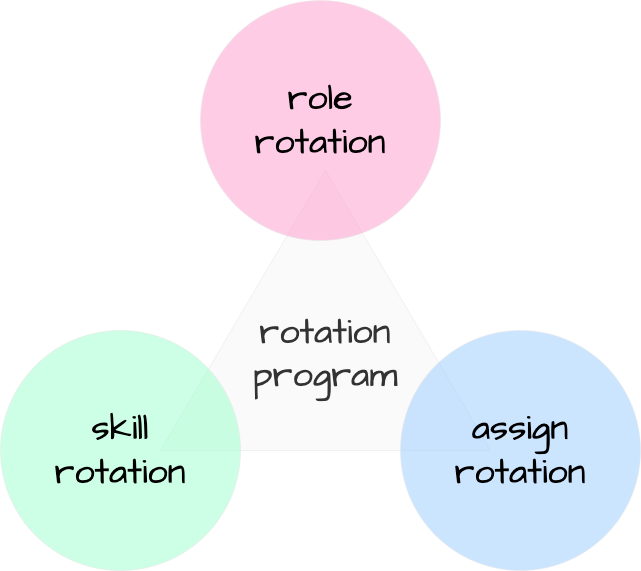
This post is for Day 24 of Merpay Advent Calendar 2022, brought to you by @ntk1000 from the Merpay Trust & Safety(TnS) Platform.
I’m working as an Engineering Manager at Merpay, in charge of the Trust & Safety(TnS) Platform team. I joined Merpay in 2019, Dec., and I’ve been in charge of multiple backend teams like, online payments, NFC payments, and the current team, TnS Platform. (I talked about our team’s cloud to cloud migration project at Merpay tech fest 2022 this summer, so if you’d like, you can read the article here (Japanese Only).)
This time I would like to introduce and explain the future of our Merpay engineering organization’s rotation program, not as TnS, but as one of Merpay’s EMs.
Two years ago, our organization held a discussion among EMs and put together a mechanism for internal transfers as "rotation program". Here is a blog post from the time after the program was released, and I remember as if it were a very long time ago that I was deeply involved in these discussions to create the "assignment rotation" mechanism.
objective
As mentioned in the previous blog post, it had been nearly three years since the development period before the release of merpay and the teams were stable, but to put it another way, the assignments were becoming more fixed. At the time, I was in charge of three teams as EM, and while each team was able to develop with a high degree of autonomy, there was not much cooperation among the teams, and there were times when one team had room to spare and the other team didn’t. Our backend teams were formed by more than 10 teams due to its Microservices architecture, and each team decided its own development style and how to divide the internal teams. (The characters of the EMs and TLs also vary, of course!) ) By having the employees gain experience in various backend teams through assignment rotations, they can learn various domain knowledge (e.g., from user-facing domain to platform-oriented domain) and deepen the interaction among engineers based on the common skills of Merpay’s product and backend. I also expected that this would lead to a deepening of interaction among engineers.
As an EM, I also wanted to actively support the career development of our members. When we announced our rotation program within the company, we set our support for career development as a purpose for the program, as well as setting forth our commitment to improving members’ skills by providing challenges and opportunities, understanding between teams, and creating a sustainable organization through the rotation.
operation
Over the past two years, I have continued to operate the rotation program to ensure that it runs well, including the maintenance of a team portal called Team Description (TD) (a page that introduces the team, its interests, development style, etc.), monthly announcements at Engineer All Hands, and confirming who wants to be rotated at EM meetings.
As a manager, apart from operating the program, I was also actively involved in developing a roadmap and goals for the team I was in charge of so that it would be a challenging environment for the members of my team, and in sharing the team’s roadmap and goals internally and externally. This would increase the likelihood that other team members would be interested in my team as well.
To my delight, in fact, more than half of the TnS Platform team is made up of members who rotated from other teams.Some members rotated each other with teams in neighboring domains. These members had the strong will to become an engineer who can broadly handle all aspects of anti-fraud measures by gaining experience in multiple TnS-related domains. This is one of the most pleasant experiences for me because the introduction of the rotation has expanded their domain knowledge and advanced their careers, as I had originally intended.
from now on

Recently an internal announcement was made regarding a rotation system that can be used across group companies. The rotation program in Merpay Engineering will be merged into that system. Though the program itself is not owned by EMs, this does not mean that EMs will no longer be involved in the rotation program, but rather that we managers will be required to consider from a broader perspective how we can support career development as a manager while offering a wider range of options to our members.
Managers are responsible for supporting the career development of their members in order to maximize the results and outcomes of the team and the organization, so what I’m trying to emphasizing is that regardless of the details of the program, we should continue to have a dialogue about our careers through 1-on-1s.
I would like to keep contributing to the career development of more members through management and help them expand their possibilities while continuing to commit to exciting product development with members.



